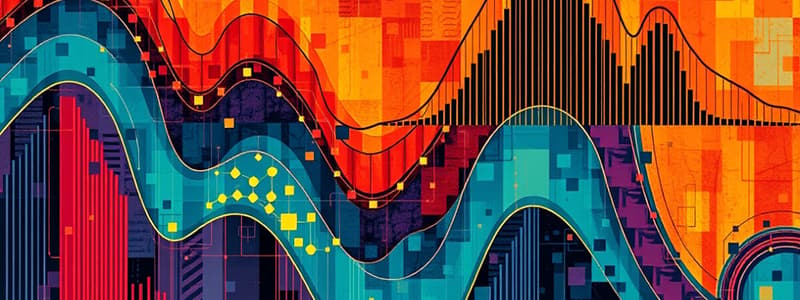Podcast
Questions and Answers
What is the primary function of a linear classifier in machine learning?
What is the primary function of a linear classifier in machine learning?
A linear classifier uses a decision boundary to classify data into distinct classes based on linear combinations of input features.
How are images vectorized for processing by linear classifiers?
How are images vectorized for processing by linear classifiers?
Images are converted into vectors by flattening their pixel values into a one-dimensional array.
What roles do the weight (w) and bias (b) terms play in a linear classifier?
What roles do the weight (w) and bias (b) terms play in a linear classifier?
The weight determines the orientation of the boundary, while the bias shifts it across the feature space.
How does a linear classifier differentiate between classes like 'cat' and 'dog'?
How does a linear classifier differentiate between classes like 'cat' and 'dog'?
What is the decision boundary in a linear classifier?
What is the decision boundary in a linear classifier?
Explain the concept of 'loss function' in the context of linear classifiers.
Explain the concept of 'loss function' in the context of linear classifiers.
What is the significance of the learning parameters w and b in adjusting the decision boundary?
What is the significance of the learning parameters w and b in adjusting the decision boundary?
How is the probability of class membership determined in linear classifiers?
How is the probability of class membership determined in linear classifiers?
What challenge is addressed by using the logistic function instead of a simple threshold function?
What challenge is addressed by using the logistic function instead of a simple threshold function?
How do linear classifiers handle non-linearly separable data?
How do linear classifiers handle non-linearly separable data?
Flashcards are hidden until you start studying
Study Notes
Linear Classifiers Overview
- A linear classifier establishes a decision boundary to categorize data into distinct classes through linear combinations of features.
Image Vectorization
- Images are transformed into vectors by flattening pixel values into a one-dimensional array, facilitating their use as inputs for classifiers.
Weight and Bias Functions
- Weight (w) and bias (b) terms shape the decision boundary equation; weights influence boundary orientation while biases allow shifts across the feature space.
Class Differentiation
- Linear classifiers differentiate classes, such as 'cat' and 'dog', via a decision boundary that segments the feature space, categorizing points on either side into respective classes.
Decision Boundary Definition
- The decision boundary represents a hyperplane that partitions different classes in feature space, defined by a linear equation incorporating weights and biases.
Loss Function Concept
- The loss function quantifies the difference between predicted and actual labels, guiding the optimization process for model parameters.
Learning Parameters Significance
- Modifying the learning parameters (weights and biases) adjusts the decision boundary's position and orientation, enhancing the classifier's accuracy.
Probability Determination
- Class membership probability is often calculated using a logistic (sigmoid) function, yielding values between 0 and 1 to indicate likelihood of class affiliation.
Logistic Function Advantage
- Utilizing the logistic function provides a smooth and continuous probability estimate, offering a more nuanced perspective compared to simple binary thresholds.
Non-Linearly Separable Data Handling
- Linear classifiers face challenges with non-linearly separable data; solutions may include kernel methods or projecting into higher-dimensional spaces to enhance classification prospects.
Studying That Suits You
Use AI to generate personalized quizzes and flashcards to suit your learning preferences.



